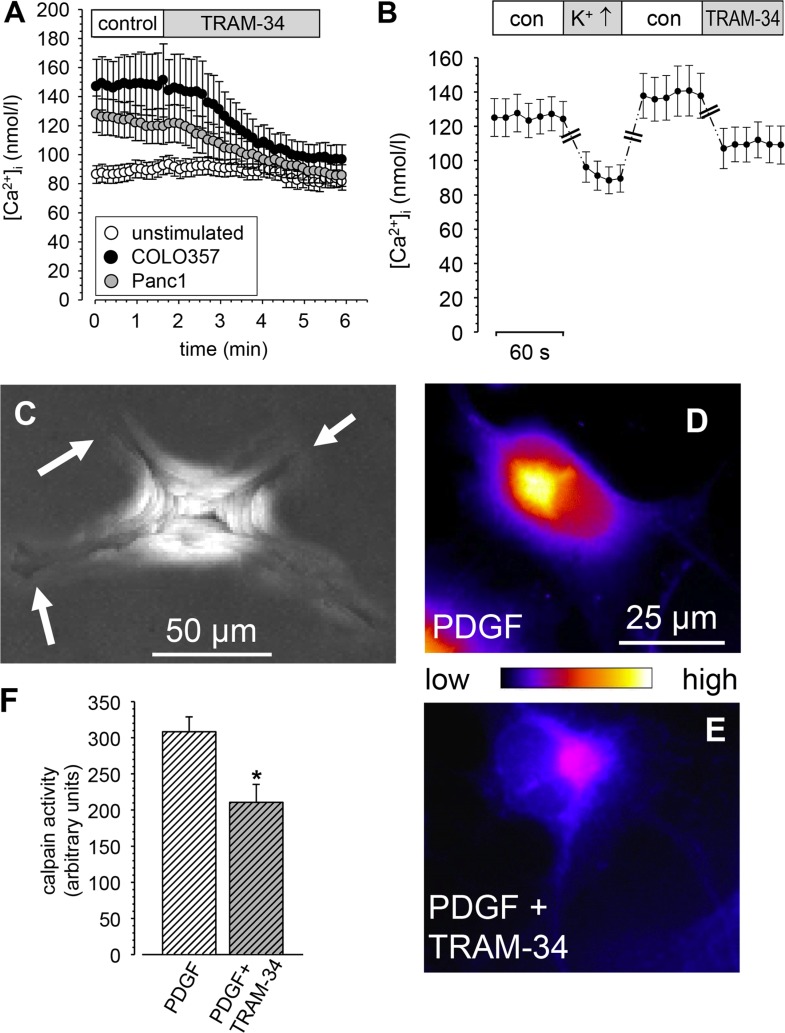Figure 4.
(A, B) Impact of KCa3.1 channels on the [Ca2+]i of RLT-PSCs stimulated with supernatant from Colo357 PDAC cells. (A) TRAM-34 (10 μmol/l) reduces the [Ca2+]i of RLT-PSCs stimulated with the supernatants from COLO357 or Panc1 cells (n = 30 cells from N = 6 experiments each), but has no effect on untreated cells (n = 30 cells from N = 4 experiments). B. Depolarizing the cell membrane potential with 50 mmol/l KCl has a similar impact on the [Ca2+]i of activated RLT-PSCs as blocking KCa3.1 channels with 500 nmol/l TRAM-34 -(n = 14 cells from N = 5 experiments; we only plotted the steady state values of the last 30–60 s of each condition). (C–F) Blocking KCa3.1 channels impairs deadhesion of RLT-PSCs by reducing calpain activity. (C) “Z-stack” of 37 images acquired in 5 min intervals of a RLT-PSC treated with PDGF and TRAM-34. The lamellipodial processes (white arrows) are clearly visible indicating that they hardly moved throughout the experiment. (D, E) Fluorescence of the calpain substrate CMAC, t-BOC-Leu-Met in RLT-PSCs treated with PDGF (D) or PDGF and TRAM-34 (E, F) Summary of N = 7 experiments with n ≥ 30 cells.

